Location of the socket for the washing machine in the bathroom
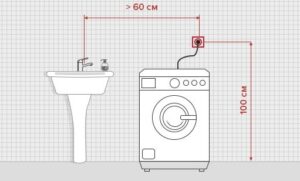 Connecting equipment to power supply requires special attention. Especially if you plan to place the outlet for the washing machine in the bathtub or in another room with high humidity. In addition to standard norms and rules, it will be necessary to provide protection from moisture, otherwise the electric point will be unsuitable for operating the machine. In order not to make a mistake, you need to find a place before installing the equipment, select an outlet and organize a high-quality outlet. Step-by-step instructions are below.
Connecting equipment to power supply requires special attention. Especially if you plan to place the outlet for the washing machine in the bathtub or in another room with high humidity. In addition to standard norms and rules, it will be necessary to provide protection from moisture, otherwise the electric point will be unsuitable for operating the machine. In order not to make a mistake, you need to find a place before installing the equipment, select an outlet and organize a high-quality outlet. Step-by-step instructions are below.
Finding a suitable location
You can’t just plug in a socket in a place you like – this is contrary to safety regulations. It is necessary that the new branch be laid in compliance with all current regulations. One of the main such documents is the VSN 59 – 88 manual, which sets out all the nuances of electrical equipment in residential premises and buildings. When choosing a location for a new outlet, you must consider:
- it is forbidden to install sockets under and above sinks, near water and sewer pipes;
- the distance between the new electrical point and any riser must be at least 60 cm;
- the height of the socket is at least 60 cm from the floor (it is recommended to raise the point by 1-1.25 m).
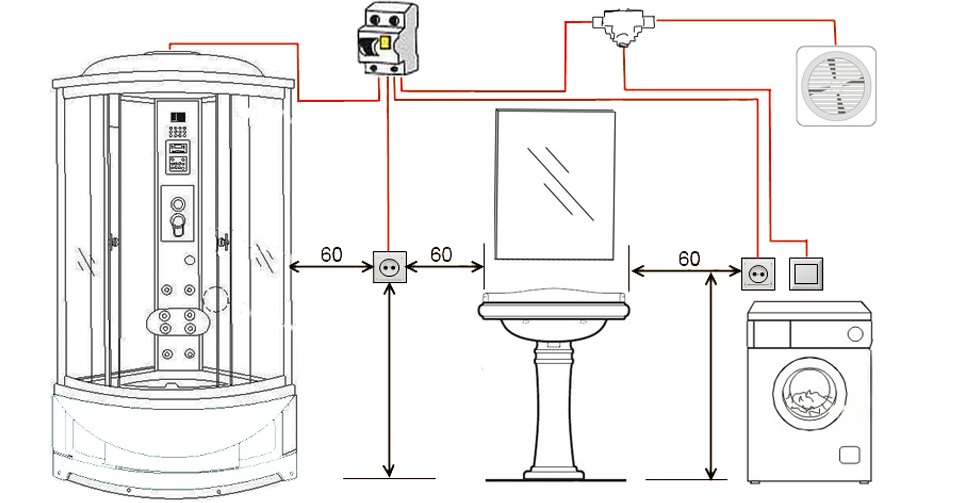
The established standards cannot be ignored - they help make the operation of electrical equipment as safe as possible. Thus, the distance of the outlet from the risers will prevent water from getting on exposed wires in the event of a pipe break. Raising the electrical point above the floor will prevent short circuits when the room is flooded.
According to the standard for electrical equipment of residential premises VSN 59 - 88, sockets cannot be located next to the sink and risers.
By the way, the height of the socket is not strictly regulated. Experts recommend raising the point by 60 cm, but if necessary, you can raise or lower the bar. Especially if the consumer’s height is above or below average, then it is more convenient to choose your parameter. Particular attention is paid to accessibility. When connecting the washing machine to the network, it is important to remember that the standard length of the machine’s power cord is 1.5-1.7 m. It is not recommended to remove the point further: you will have to use extension cords or change the factory cable. Both options are risky, so it is better to think about the location of the wire in advance.
Requires a special socket design
When choosing a bathroom to place the washing machine, you should take into account the “humidity” of the latter. Everyone knows that water and electricity are incompatible, so the outlet in sanitary facilities must be protected from moisture. There is no need to invent anything - electrical equipment manufacturers have provided for everything. Sockets are protected from moisture in the following ways:
- a special “shutter”, which is located inside the mechanism, and when the plug is pulled out, it lowers, blocking access to the contacts;

- a lid that, thanks to a spring system, slams shut after use;
- rubber seals located in the socket holes and blocking access to the contacts.
In the bathroom it is necessary to install sockets with a minimum protection class of IP44.
For user convenience, all sockets are grouped according to the degree of moisture resistance. The parameter must be indicated on the labeling - the letters IP with two symbols.The first reflects the protection of the case from dust, the second indicates resistance to water. When installing a washing machine, it is recommended to choose the safest option marked IP44 or higher.
Wiring and automatic
The washing machine is a very powerful consumer of electricity, so an appropriate line is required to connect it. The first requirement concerns the wires, which must be three-core. The third core is necessary to organize grounding, which will protect equipment and the user from electric shock during a leak. Also, when organizing communications for the washing machine, you should take into account several more requirements and rules:
- a separate branch is allocated for the machine;
- the equipment is connected to an individual machine;
- the machine must operate at a leakage current of up to 30 mA;
- A stabilizer is included in the circuit to smooth out voltage surges in the electrical network.
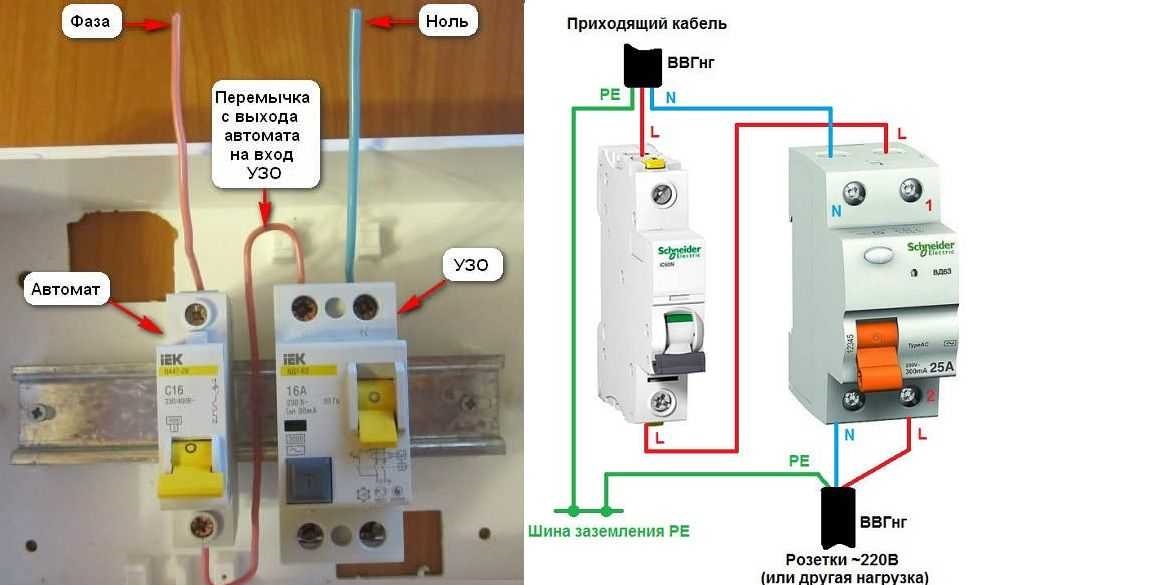
When setting up electrical communications, it is better not to save money. Thus, it is recommended to allocate RCDs or automatic circuit breakers with a rated shutdown current of 10 mA for the washing machine. This is more expensive, but the risk of leakage is minimal - the device instantly reacts to a failure and cuts off the supply of electricity. If you plan to install a circuit breaker, then select a 16A device.
We also pay attention to the cable used when laying the line. When connecting automatic machines, it is recommended to use copper wires and lay them covertly. The cross-section of the cores depends on the power of the equipment; as a rule, a minimum of 2.5 mm is taken. Ideally, you should take a “reserve” - this will avoid overloading the power grid. This way the machine will work safer and will not threaten residents with fire, accidental tripping of the RCD or accident.
If the apartment has aluminum wiring with a cross-section of 1.5-2 mm, then it is better to replace it with copper. Ideally, organize a new line in compliance with all the standards described above. Otherwise, operating the washing machine will be dangerous: the cable will heat up from excessive load and the insulation will melt. The result could be a fire with all that it entails.
We install a socket
Is the socket installed incorrectly or too far from the washing machine? Is the wiring aluminum or undersized? Then it’s better not to risk it and bring a new branch to the machine. Everyone can cope with the task. Instructions for installing a new outlet:
- cut off power to the bathroom or the entire apartment;
- mark the wall;
- install an attachment for the socket box on the hammer drill;
- drill a hole;
- groove the wall to the electrical panel;
- install a new RCD;
- lay a wire from the panel to the future outlet;
- put plaster into the hole under the socket and fix the “glass”;
- secure the wire in the groove;
- bring the veins into the glass;
- insert the socket mechanism;

- connect the wiring;
- snap the socket housing into place.
The new outlet must be checked. It’s better not to risk using a washing machine and connect a lamp or charger to the point first. Works? Then you can wash it.
Interesting:
Reader comments
- Share your opinion - leave a comment
Categories
Washing machine repair


For buyers

For users

Dishwasher

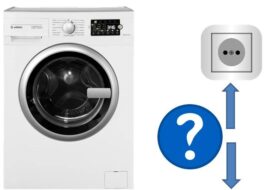



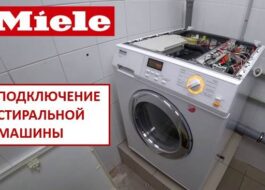











Add a comment